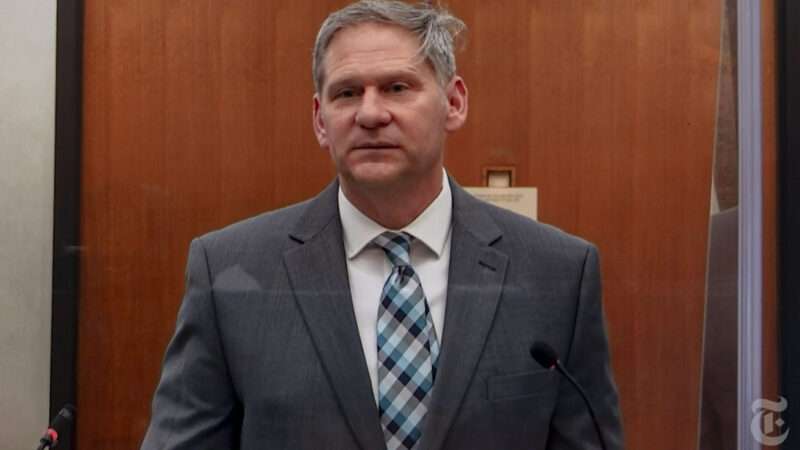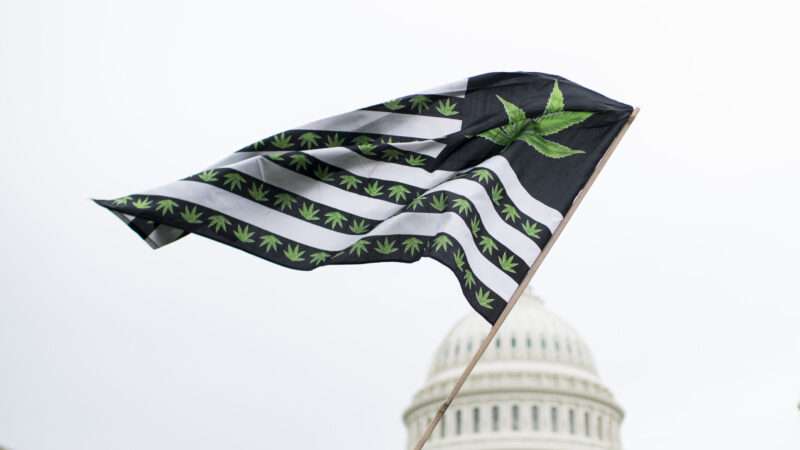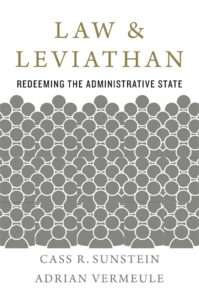
During his closing argument in Derek Chauvin’s murder trial today, prosecutor Steve Schleicher urged jurors to focus on the “nine minutes and 29 seconds” during which the former Minneapolis police officer kept a handcuffed George Floyd pinned facedown to the pavement. “Force must be reasonable,” he said. “It must be reasonable at the point it starts, at the point it ends, and at all points in between.” And during his prolonged prone restraint, Schleicher said, Floyd “was not a threat to anyone.”
A thorough consideration of the evidence, Schleicher said, only confirms the impression left by the bystander video that appalled people across the country. “You can believe your own eyes,” he said. “This case is exactly what you thought when you saw it first, when you saw that video.”
Defense attorney Eric Nelson, by contrast, asked the jurors to consider “the totality of the circumstances,” including what Chauvin heard, witnessed, and experienced before pinning Floyd to the ground on May 25. “The use of force is an incredibly difficult analysis,” he said. “You can’t limit it to nine minutes and 29 seconds, [because] it started nearly 17 minutes earlier.”
Schleicher also talked about the broader context of Floyd’s encounter with the police, which began after a convenience store employee called 911 to report that Floyd had used a phony $20 bill to buy cigarettes. When Officers J. Alexander Kueng and Thomas Lane approached Floyd as he sat in his car near the store, Schleicher noted, they were immediately aggressive. “Within seconds,” Lane was holding his gun “inches from George Floyd’s face”; the officer was screaming and cursing at Floyd, who looked “terrified.”
Floyd nevertheless initially complied with all of the officers’ instructions: He put his hands on the steering wheel, got out of the car, did not resist as he was handcuffed (even though the cuffs were not double-locked and therefore continued to ratchet and squeeze his wrists), walked over to a Chinese restaurant and sat down on the sidewalk, got up again, and walked across the street. But when Kueng and Lane tried to put him in their patrol car, Floyd seemed to have an anxiety attack. He said he was claustrophobic, complained that he could not breathe, and asked to ride in the front seat.
From Floyd’s perspective, Schleicher said, the back of the squad car looked “like a little cage.” Still, he said, Floyd’s statements suggest that he “was trying to work up the courage” to get into the car. Kueng and Lane lost patience and tried to force Floyd into the car, a decision that even Nelson has criticized. “If Kueng and Lane had chosen to de-escalate instead of struggle, Mr. Floyd may have survived,” he said in a pretrial motion. Schleicher likewise faulted Kueng and Lane for escalating the situation instead of trying to calm Floyd.
According to Nelson, the struggle inside the car, which lasted about a minute, made a strong impression on Chauvin, who was trying to assist Kueng and Lane. The car was “rocking back and forth,” he said, and “a reasonable police officer understands the intensity of the struggle,” having seen that “Mr. Floyd was able to overcome the efforts of three police officers while handcuffed, [using] his legs and his body strength.”
Once the cops pulled Floyd out of the car, however, he stopped struggling and thanked them repeatedly, which in Schleicher’s view confirmed that “the problem was the back of the car.” At this point, Floyd was handcuffed and kneeling on the street. “He is handcuffed,” Schleicher said. “He is on his knees. He is not going anywhere. There are four officers there….It could have been over there.”
But Chauvin, Kueng, and Lane “pushed him down on the ground,” Schleicher said, even though they “didn’t need to.” Floyd was briefly lying in the “side recovery position,” which makes it relatively easy to breathe. “Incredibly,” Schleicher said, “they take him out of the recovery position and prone him on the ground.” That position, he said, is supposed to be used only prior to handcuffing an arrestee, after which Minneapolis police are trained to put him on his side or let him sit up to avoid the risk of “positional asphyxia.”
Chauvin had one knee on Floyd’s neck and the other on his back, while Kueng applied pressure to his back and Lane held his legs. They kept him pinned in that position for nine and a half minutes, despite Floyd’s repeated complaints that he was in pain and could not breathe, despite Lane’s suggestion that Floyd should be rolled onto his side, and despite concerned bystanders’ warnings that his life was in danger. Chauvin continued kneeling on Floyd even after he stopped talking and moving, became unresponsive, appeared to lose consciousness, and no longer had a detectable pulse.
“George Floyd begged until he could speak no more, and the defendant continued this assault,” Schleicher said. “When he was unable to speak, the defendant continued. When he was unable to breathe, the defendant continued, beyond the point that he had a pulse…When the ambulance arrived…the defendant continued. He stayed on top of him. He would not get up. He would not let up. He stayed on him, grinding into him, continuing to twist his fingers, to hold him down. He had no pulse. He was not breathing. He was not responsive. And the defendant had to know what was right beneath him.”
In Nelson’s view, that prolonged prone restraint has to be understood in light of Chauvin’s reasonable fears. He knew that Floyd was a big guy, suspected that he was under the influence of drugs, had experienced his strength and “active resistance” in the patrol car, and understood that an arrestee’s behavior “can change in an instant” from compliance to resistance or aggression. “It’s a dynamic situation,” he said. “A reasonable police officer tries to predict, or is at least cognizant and concerned about, future behavior, based upon past behavior….Human behavior is unpredictable, and no one knows it better than a police officer.”
At the same time, Nelson implicitly acknowledged that Chauvin’s choices were at least questionable. “The standard is not what should the officer have done in these circumstances,” he said. “Officers are human beings capable of making mistakes in highly stressful situations.” He also called Floyd’s death “tragic” and conceded that Chauvin’s treatment of him was “unattractive.”
While Nelson emphasized Floyd’s size and apparent intoxication, Schleicher noted that such factors do not on their own constitute a threat that justifies the use of force. The defense’s use-of-force expert, Barry Brodd, claimed that Floyd was “somewhat resisting” even after he was pinned to the ground, although his definition of resistance seemed to include writhing in pain and struggling to breathe. But even by Brodd’s account, the prone restraint continued for more than seven minutes after Floyd was no longer resisting.
Regardless of what Chauvin worried might happen, it is clear that he kept kneeling on Floyd long after Floyd posed no conceivable threat. “I think he’s passing out,” Lane said after several minutes, and soon afterward Kueng reported that he could not find a pulse. “How can you justify the continued use of force against this man when he has no pulse?” Schleicher wondered. “It was not necessary. It was gratuitous. It was disproportionate.”
Brodd nevertheless concluded that Chauvin’s use of force was justified in the circumstances. That contradicted the testimony of the city’s police chief, other supervisors, and other use-of-force experts, who said Chauvin’s actions violated his training, department policy, and the Fourth Amendment, which according to the Supreme Court requires that force be “objectively reasonable,” meaning a “reasonable officer” would have done the same thing in the same situation.
Nelson today dismissed those conclusions as “opinions.” But the only countervailing testimony he offered on this point came from Brodd, who raised many eyebrows by arguing that pinning Floyd to the pavement did not even qualify as a use of force because it was not likely to cause pain. Brodd also claimed that “drug-influenced” suspects “don’t feel pain” and “may have superhuman strength”—an old canard with racist roots that police tend to drag out when they are accused of using excessive force.
Schleicher took aim at all three assertions during his closing argument. Aside from the fact that the Minneapolis Police Department’s definition of force (like most people’s) does not require the infliction of pain, he said, Floyd was clearly experiencing pain under Chauvin’s knee, as reflected in his repeated complaints to that effect. Schleicher showed photos of lacerations on Floyd’s face, knuckles, and shoulder, which he said were evidence of his desperate struggle to “create breathing space” by pushing against the pavement. He also noted that Chauvin used “pain compliance” techniques on Floyd’s fingers and hands, even though at that point there was no more that Floyd could do to comply.
So much for the insensitivity to pain that Brodd described. Schleicher also noted that “there is no such thing as superhuman strength because there is no such thing as superhumans,” who exist only “in comic books.” Far from demonstrating superhuman strength while three cops had him pinned to the ground, Schleicher said, Floyd “was so desperate to breathe [that] he pushed with his face…to lift himself, to open his chest, to give his lungs room to breathe, the pavement tearing into his skin.”
As he has throughout the trial, Nelson dismissed the prosecution’s claim that Floyd died because the prone restraint made it impossible for him to breathe properly. He said Chicago pulmonologist Martin Tobin, who explained in detail how that position would have impeded Floyd’s breathing and concluded that he died from “a low level of oxygen,” offered nothing but “theory, speculation, and assumption.” Yet even Brodd conceded that the risk of positional asphyxia has long been widely understood by police.
Nelson noted that Hennepin County Medical Examiner Andrew Baker said nothing about asphyxia in his autopsy report. The prosecution “did not like Dr. Baker’s conclusions,” he said. Yet Baker, who concluded that the use of force against Floyd fatally interacted with his “very severe underlying heart disease,” classified the death as a homicide. And in his testimony, he did not rule out the possibility that impeded breathing played a role in Floyd’s “cardiopulmonary arrest,” saying, “I would defer to a pulmonologist.”
The defense’s sole medical witness, David Fowler, concluded that Floyd died from “a sudden cardiac arrhythmia” rather than asphyxia. But he said an important factor in that arrhythmia was the “very stressful situation” created by Floyd’s prone restraint, which hardly lets Chauvin off the hook. As Schleicher noted, it would be an “amazing coincidence” if, after Floyd was pressed against the pavement for nine and a half minutes, “he chose that moment to die of heart disease.”
The defense also has argued that Floyd’s consumption of fentanyl contributed to his death. But the level of fentanyl in Floyd’s blood, 11 nanograms per milliliter, was near the low end of the concentrations seen in fatal overdoses, and Floyd, as a regular user, would have developed tolerance. A toxicologist testified that the ratio of fentanyl to the metabolite norfentanyl was much lower than what is typically seen in fentanyl-related deaths, and medical experts noted that Floyd was not displaying signs of an opioid overdose, such as drowsiness, slow breathing, or constricted pupils.
Nelson today implied that other possible contributing factors mean that Chauvin did not cause Floyd’s death. But as Schleicher noted, “the fact that other causes may have contributed to George Floyd’s death does not relieve the defendant of any criminal liability.” If Chauvin’s actions were “a substantial causal factor,” that makes him legally responsible, assuming that his use of force was objectively unreasonable.
If the jurors agree that Chauvin caused Floyd’s death by using excessive force, they still will have to decide which of the charges against him fit the facts of the case. The second-degree murder charge alleges that Chauvin killed Floyd while committing felony assault, which means he “intentionally applied unlawful force” and thereby inflicted “substantial bodily harm.” The third-degree murder charge says Chauvin killed Floyd by “perpetrating an act eminently dangerous to others and evincing a depraved mind, without regard for human life.” The second-degree manslaughter charge alleges that Chauvin caused Floyd’s death “by his culpable negligence, creating an unreasonable risk and consciously [taking] the chances of causing great bodily harm.”
Nelson argued that the prosecution had failed to prove the predicate felony underlying the second-degree murder charge. “There is absolutely no evidence that Officer Chauvin intentionally, purposefully applied an unlawful force,” he said. He maintained that the prosecution had not proved the other charges beyond a reasonable doubt either.
It seems to me that Chauvin’s actions easily qualify as second-degree manslaughter, which carries a maximum penalty of 10 years in prison and a presumptive sentence of four years. I have reservations about the felony murder charge, which thanks to a quirk of Minnesota’s law allows prosecutors to treat pretty much any deliberate assault that unintentionally causes someone’s death as murder rather than manslaughter.
The third-degree murder charge carries a lower maximum penalty than felony murder (25 vs. 40 years) but the same presumptive sentence: 12.5 years. Schleicher made a persuasive case that Chauvin’s actions reflected a “depraved mind,” meaning that he showed “reckless and wanton unconcern and indifference.”
Nelson has suggested that Chauvin’s use of force and his failure to perform CPR are mitigated by the distracting presence of horrified bystanders who criticized the way he was treating Floyd. To the contrary, Schleicher argued, those objections should have alerted Chauvin to the danger of positional asphyxia, especially when combined with his training and Lane’s suggestion that Floyd should be rolled off his stomach.
Schleicher suggested that Chauvin “chose pride over policing,” seeing the onlookers’ criticism as an ego-threatening challenge to his authority. “The defendant was not going to be told what to do,” he said. “He was not going to let these bystanders tell him what to do. He was going to do what he wanted, how he wanted, for as long as he wanted, and there was nothing they could do about it, because he had the authority. He had the power of the badge.”
Whatever distraction the bystanders caused, Chauvin clearly was aware that Floyd was in distress. When Floyd said he was in pain, Chauvin repeatedly responded with a flat “uh-huh.” When Floyd said, over and over again (27 times, by the prosecution’s count), that he could not breathe, Chauvin replied that “it takes a lot of oxygen” to complain. “The defendant heard it, he acknowledged it, and all he did was mock him,” Schleicher said.
Schleicher emphasized that convicting Chauvin would not be an indictment of police generally, noting all the officers who testified against him. “This wasn’t policing; it was murder,” he said. “He betrayed the badge and everything it stood for. It’s not how they’re trained. It’s not following the rules….This is not an anti-police prosecution. It’s a pro-police prosecution.”
from Latest – Reason.com https://ift.tt/3dx35ER
via IFTTT

